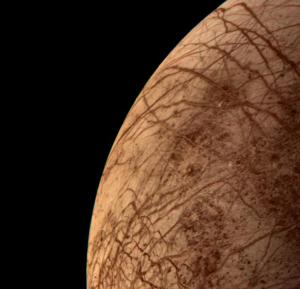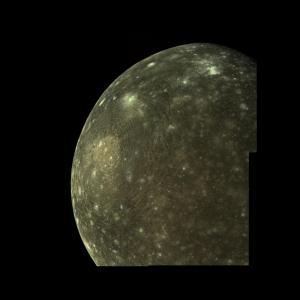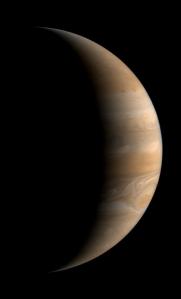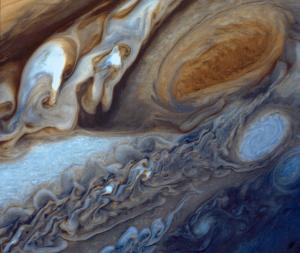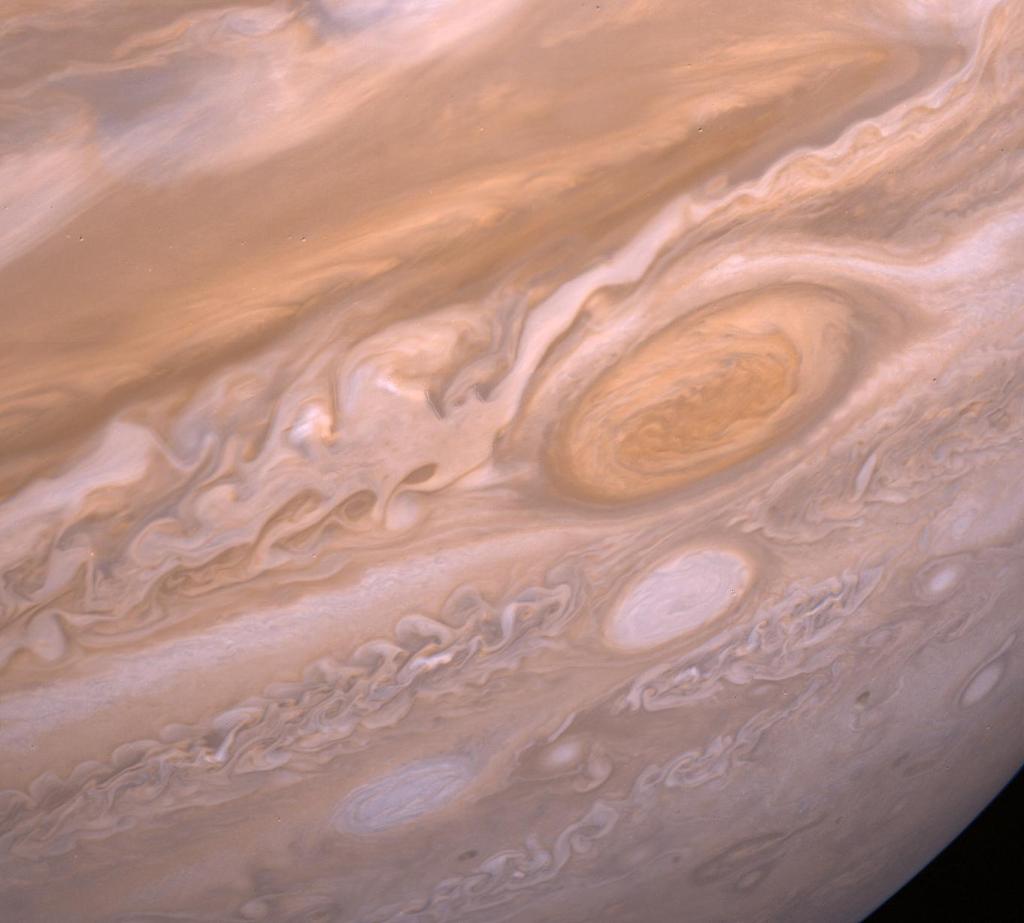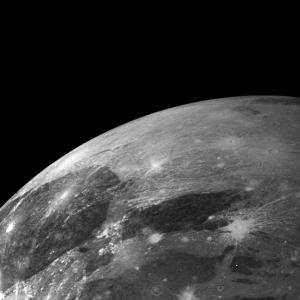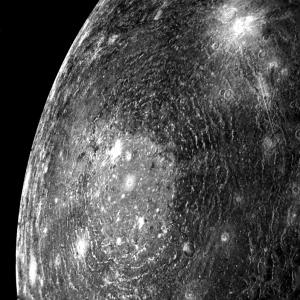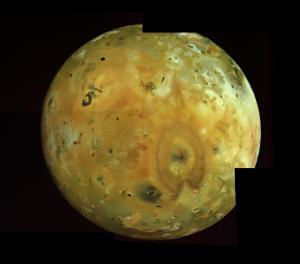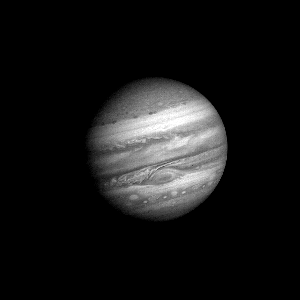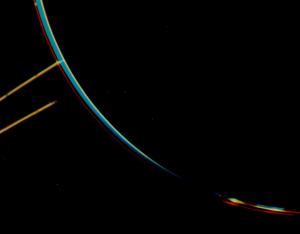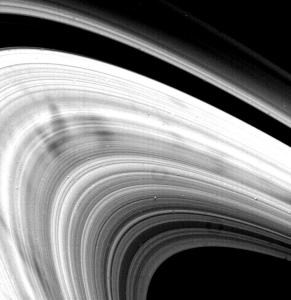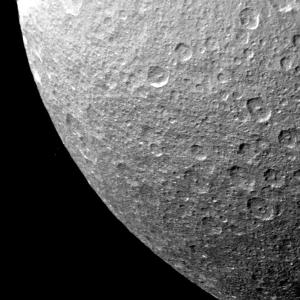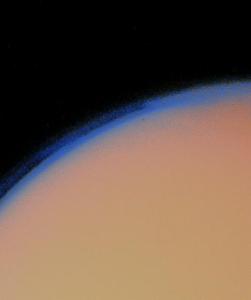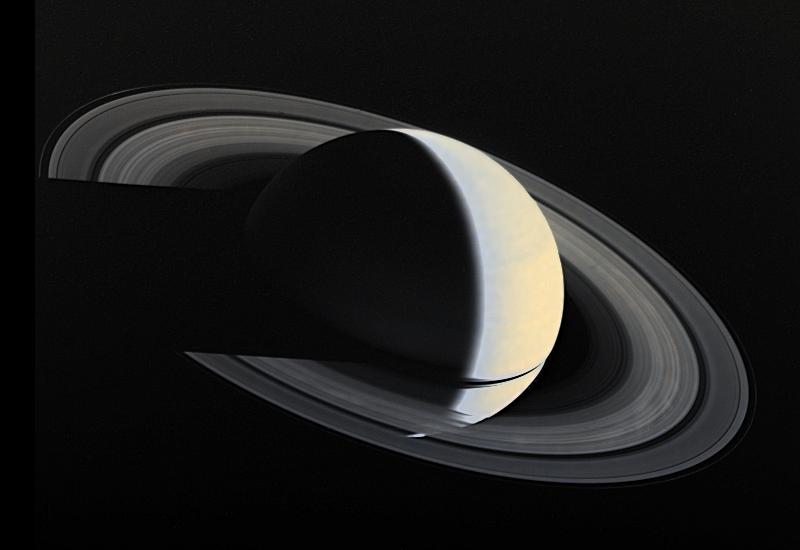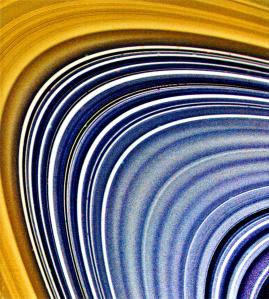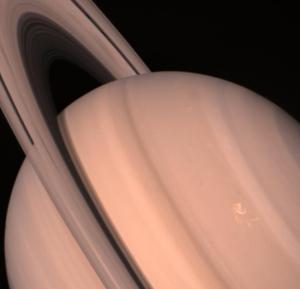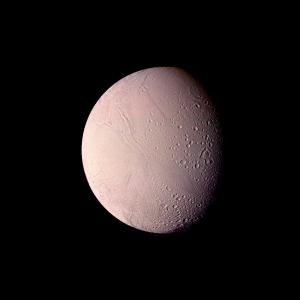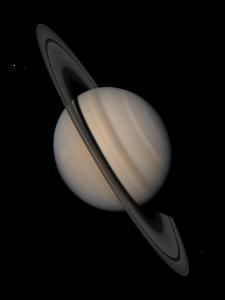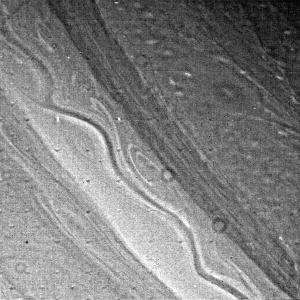Voyager 1 and 2
Planetary Voyage
The twin spacecraft Voyager 1 and Voyager 2 were launched by NASA in separate months in the summer of 1977 from Cape Canaveral, Florida. As originally designed, the Voyagers were to conduct close up studies of Jupiter and Saturn, Saturn's rings, and the larger moons of the two planets.
To accomplish their two-planet mission, the spacecraft were built to last five years. But as the mission went on, and with the successful achievement of all its objectives, the additional flybys of the two outermost giant planets, Uranus and Neptune, proved possible -- and irresistible to mission scientists and engineers at the Voyagers' home at the Jet Propulsion Laboratory in Pasadena, California.
As the spacecraft flew across the solar system, remote-control reprogramming was used to endow the Voyagers with greater capabilities than they possessed when they left the Earth. Their two-planet mission became four. Their five-year lifetimes stretched to 12 and is now beyond 45 years.
Eventually, between them, Voyager 1 and 2 would explore all the giant outer planets of our solar system, 48 of their moons, and the unique systems of rings and magnetic fields those planets possess.
Had the Voyager mission ended after the Jupiter and Saturn flybys alone, it still would have provided the material to rewrite astronomy textbooks. But having doubled their already ambitious itineraries, the Voyagers returned to Earth information over the years that has revolutionized the science of planetary astronomy, helping to resolve key questions while raising intriguing new ones about the origin and evolution of the planets in our solar system.
The Grand Tour
History Of The Voyager Mission
The Voyager mission was designed to take advantage of a rare geometric arrangement of the outer planets in the late 1970s and the 1980s which allowed for a four-planet tour for a minimum of propellant and trip time. This layout of Jupiter, Saturn, Uranus and Neptune, which occurs about every 175 years, allows a spacecraft on a particular flight path to swing from one planet to the next without the need for large onboard propulsion systems. The flyby of each planet bends the spacecraft's flight path and increases its velocity enough to deliver it to the next destination. Using this "gravity assist" technique, first demonstrated with NASA's Mariner 10 Venus/Mercury mission in 1973-74, the flight time to Neptune was reduced from 30 years to 12.
While the four-planet mission was known to be possible, it was deemed to be too expensive to build a spacecraft that could go the distance, carry the instruments needed and last long enough to accomplish such a long mission. Thus, the Voyagers were funded to conduct intensive flyby studies of Jupiter and Saturn only. More than 10,000 trajectories were studied before choosing the two that would allow close flybys of Jupiter and its large moon Io, and Saturn and its large moon Titan; the chosen flight path for Voyager 2 also preserved the option to continue on to Uranus and Neptune.
From the NASA Kennedy Space Center at Cape Canaveral, Florida, Voyager 2 was launched first, on August 20, 1977; Voyager 1 was launched on a faster, shorter trajectory on September 5, 1977. Both spacecraft were delivered to space aboard Titan-Centaur expendable rockets.
Jupiter and Saturn
The prime Voyager mission to Jupiter and Saturn brought Voyager 1 to Jupiter on March 5, 1979, and Saturn on November 12, 1980, followed by Voyager 2 to Jupiter on July 9, 1979, and Saturn on August 25, 1981.
Voyager 1's trajectory, designed to send the spacecraft closely past the large moon Titan and behind Saturn's rings, bent the spacecraft's path inexorably northward out of the ecliptic plane -- the plane in which most of the planets orbit the Sun. Voyager 2 was aimed to fly by Saturn at a point that would automatically send the spacecraft in the direction of Uranus.
Voyager at Jupiter
Jupiter Approach
NASA launched the two Voyager spacecraft to Jupiter, Saturn, Uranus, and Neptune in the late summer of 1977. Voyager 1's closest approach to Jupiter occurred March 5, 1979. Voyager 2's closest approach was July 9, 1979.
Photography of Jupiter began in January 1979, when images of the brightly banded planet already exceeded the best taken from Earth. Voyager 1 completed its Jupiter encounter in early April, after taking almost 19,000 pictures and many other scientific measurements. Voyager 2 picked up the baton in late April and its encounter continued into August. They took more than 33,000 pictures of Jupiter and its five major satellites.
Although astronomers had studied Jupiter from Earth for several centuries, scientists were surprised by many of Voyager 1 and 2's findings. They now understand that important physical, geological, and atmospheric processes go on - in the planet, its satellites, and magnetosphere - that were new to observers.
Discovery of active volcanism on the satellite Io was probably the greatest surprise. It was the first time active volcanoes had been seen on another body in the solar system. It appears that activity on Io affects the entire Jovian system. Io appears to be the primary source of matter that pervades the Jovian magnetosphere -- the region of space that surrounds the planet, primarily influenced by the planet's strong magnetic field. Sulfur, oxygen, and sodium, apparently erupted by Io's volcanoes and sputtered off the surface by impact of high-energy particles, were detected at the outer edge of the magnetosphere.
Voyager at Saturn
Saturn Approach
The Voyager 1 and 2 Saturn encounters occurred nine months apart, in November 1980 and August 1981. Voyager 1 is leaving the solar system. Voyager 2 completed its encounter with Uranus in January 1986 and with Neptune in August 1989, and is now also en route out of the solar system.
The two Saturn encounters increased our knowledge and altered our understanding of Saturn. The extended, close-range observations provided high-resolution data far different from the picture assembled during centuries of Earth-based studies.
Here is a summary of scientific findings by the two Voyagers at Saturn: SATURN Saturn's atmosphere is almost entirely hydrogen and helium. Voyager 1 found that about 7 percent of the volume of Saturn's upper atmosphere is helium (compared with 11 percent of Jupiter's atmosphere), while almost all the rest is hydrogen. Since Saturn's internal helium abundance was expected to be the same as Jupiter's and the Sun's, the lower abundance of helium in the upper atmosphere may imply that the heavier helium may be slowly sinking through Saturn's hydrogen; that might explain the excess heat that Saturn radiates over energy it receives from the Sun. (Saturn is the only planet less dense than water. In the unlikely event that a lake could be found large enough, Saturn would float in it.)
Subdued contrasts and color differences on Saturn could be a result of more horizontal mixing or less production of localized colors than in Jupiter's atmosphere. While Voyager 1 saw few markings, Voyager 2's more sensitive cameras saw many: Long-lived ovals, tilted features in east-west shear zones, and others similar to, but generally smaller than, on Jupiter.
Winds blow at high speeds in Saturn. Near the equator, the Voyagers measured winds about 500 meters a second (1,100 miles an hour). The wind blows mostly in an easterly direction. Strongest winds are found near the equator, and velocity falls off uniformly at higher latitudes. At latitudes greater than 35 degrees, winds alternate east and west as latitude increases. Marked dominance of eastward jet streams indicates that winds are not confined to the cloud layer, but must extend inward at least 2,000 kilometers (1,200 miles). Furthermore, measurements by Voyager 2 showing a striking north-south symmetry that leads some scientists to suggest the winds may extend from north to south through the interior of the planet.
While Voyager 2 was behind Saturn, its radio beam penetrated the upper atmosphere, and measured temperature and density. Minimum temperatures of 82 Kelvins (-312 degrees Fahrenheit) were found at the 70-millibar level (surface pressure on Earth is 1,000 millibars). The temperature increased to 143 Kelvins (-202 degrees Fahrenheit) at the deepest levels probed - - about 1,200 millibars. Near the north pole temperatures were about 10 degrees Celsius (18 degrees Fahrenheit) colder at 100 millibars than at mid-latitudes. The difference may be seasonal.
The Voyagers found aurora-like ultraviolet emissions of hydrogen at mid-latitudes in the atmosphere, and auroras at polar latitudes (above 65 degrees). The high-level auroral activity may lead to formation of complex hydrocarbon molecules that are carried toward the equator. The mid-latitude auroras, which occur only in sunlit regions, remain a puzzle, since bombardment by electrons and ions, known to cause auroras on Earth, occurs primarily at high latitudes.
Both Voyagers measured the rotation of Saturn (the length of a day) at 10 hours, 39 minutes, 24 seconds.
Uranus and Neptune
After Voyager 2's successful Saturn encounter, it was shown that Voyager 2 would likely be able to fly on to Uranus with all instruments operating. NASA provided additional funding to continue operating the two spacecraft and authorized JPL to conduct a Uranus flyby. Subsequently, NASA also authorized the Neptune leg of the mission, which was renamed the Voyager Neptune Interstellar Mission.
Voyager 2 encountered Uranus on January 24, 1986, returning detailed photos and other data on the planet, its moons, magnetic field and dark rings. Following Voyager 2's closest approach to Neptune on August 25, 1989, the spacecraft flew southward, below the ecliptic plane and onto a course that will take it, too, to interstellar space.
Uranus Approach
NASA's Voyager 2 spacecraft flew closely past distant Uranus, the seventh planet from the Sun, in January 1986. At its closest, the spacecraft came within 81,500 kilometers (50,600 miles) of Uranus's cloudtops on Jan. 24, 1986.
Voyager 2 radioed thousands of images and voluminous amounts of other scientific data on the planet, its moons, rings, atmosphere, interior and the magnetic environment surrounding Uranus.
Since launch on Aug. 20, 1977, Voyager 2's itinerary has taken the spacecraft to Jupiter in July 1979, Saturn in August 1981, and then Uranus. Voyager 2's next encounter was with Neptune in August 1989. Both Voyager 2 and its twin, Voyager 1, will eventually leave our solar system and enter interstellar space.
Voyager 2's images of the five largest moons around Uranus revealed complex surfaces indicative of varying geologic pasts. The cameras also detected 11 previously unseen moons. Several instruments studied the ring system, uncovering the fine detail of the previously known rings and two newly detected rings. Voyager data showed that the planet's rate of rotation is 17 hours, 14 minutes. The spacecraft also found a Uranian magnetic field that is both large and unusual. In addition, the temperature of the equatorial region, which receives less sunlight over a Uranian year, is nevertheless about the same as that at the poles.
Neptune Approach
In the summer of 1989, NASA's Voyager 2 became the first spacecraft to observe the planet Neptune, its final planetary target. Passing about 4,950 kilometers (3,000 miles) above Neptune's north pole, Voyager 2 made its closest approach to any planet 12 years after leaving Earth in 1977. Five hours later, Voyager 2 passed about 40,000 kilometers (25,000 miles) from Neptune's largest moon, Triton, the last solid body the spacecraft will have an opportunity to study.
Neptune is one of the class of planets -- all of them beyond the asteroid belt -- known as gas giants; the others in this class are Jupiter, Saturn and Uranus. These planets are about 4 to 12 times greater in diameter than Earth. They have no solid surfaces but possess massive atmospheres that contain substantial amounts of hydrogen and helium with traces of other gases.
Voyager 1, launched September 5, 1977, visited Jupiter in 1979 and Saturn in 1980. It is now leaving the solar system, rising above the ecliptic plane at an angle of about 35 degrees, at a rate of about 520 million kilometers a year.
Voyager 2, launched August 20, 1977, visited Jupiter in 1979, Saturn in 1981 and Uranus in 1986 before making its closest approach to Neptune on August 25, 1989. Voyager 2 traveled 12 years at an average velocity of 19 kilometers a second (about 42,000 miles an hour) to reach Neptune, which is 30 times farther from the Sun than Earth is. Voyager observed Neptune almost continuously from June to October 1989. Now Voyager 2 is also headed out of the solar system, diving below the ecliptic plane at an angle of about 48 degrees and a rate of about 470 million kilometers a year.
Both spacecraft will continue to study ultraviolet sources among the stars, and their fields and particles detectors will continue to search for the boundary between the Sun's influence and interstellar space. If all goes well, we will be able to communicate with the two spacecraft for another 20 years, until their radioactive power sources can no longer supply enough electrical energy to power critical subsystems.
Going Interstellar
Voyager 1, meanwhile, continues to press outward, conducting studies of interplanetary space. Reflecting the Voyagers' new transplanetary destinations, the project is now known as the Voyager Interstellar Mission.
Voyager 1 has crossed into the heliosheath and is leaving the solar system, rising above the ecliptic plane at an angle of about 35 degrees at a rate of about 520 million kilometers (about 320 million miles) a year. (Voyager 1 entered interstellar space on August 25, 2012.) Voyager 2 is also headed out of the solar system, diving below the ecliptic plane at an angle of about 48 degrees and a rate of about 470 million kilometers (about 290 million miles) a year.
Both spacecraft will continue to study ultraviolet sources among the stars, and the fields and particles instruments aboard the Voyagers will continue to explore the boundary between the Sun's influence and interstellar space. Communications will be maintained until the Voyagers' power sources can no longer supply enough electrical energy to power critical subsystems.
Voyager 1 and 2 Hyperbolic Orbital Elements - November 1989
The following are hyperbolic elements for NASA's Voyager 1 and 2 during various legs of their travels to the outer planets of the solar system.
Voyager 1 was launched in September 1977 and flew by Jupiter and Saturn. Voyager 2 was launched in August 1977 and flew by Jupiter, Saturn, Uranus and Neptune. Both spacecraft are now headed out of the solar system into interstellar space.
These data were provided by Steve Matousek, trajectory engineer for the Voyager Project at the Jet Propulsion Laboratory.
Abbreviations used:
ET = Ephemeris Time
a = semi-major axis (kilometers)
e = eccentricity
i = inclination (degrees)
OM = longitude of ascending node (degrees) (big omega)
o = argument of perifocus (degrees) (small omega)
M = mean anomaly (degrees)
i, OM and o are Sun-centered, Earth ecliptic of 1950.0, except at planetary encounters where the elements are planet-centered.
| Voyager 1 | Voyager 2 |
|---|---|
| EARTH INJECTION TO JUPITER Epoch = 9/8/77 09:08:17 ET a = 745,761,000 e = .797783 i = 1.032182 OM = -17.565509 o = -.767558 M = .304932 | EARTH INJECTION TO JUPITER Epoch = 8/23/77 11:29:11 ET a = 544,470,000 e = .724429 i = 4.825717 OM = -32.940520 o = 11.702680 M = -.888403 |
| JUPITER-CENTERED Epoch = 3/5/79 12:05:26 ET a = -1,092,356 e = 1.318976 i = 3.979134 OM = 119.454908 o = -62.062795 M = 0. | JUPITER-CENTERED Epoch = 7/9/79 22:29:51 ET a = -2,184,140 e = 1.330279 i = 6.913454 OM = 147.253921 o = -95.715216 M = 0. |
| JUPITER TO SATURN Epoch = 4/24/79 07:33:03 ET a = -593,237,000 e = 2.302740 i = 2.481580 OM = 112.975465 o = -1.527299 M = 19.156329 | JUPITER TO SATURN Epoch = 9/15/79 11:07:25 ET a = -2,220,315,000 e = 1.338264 i = 2.582320 OM = 119.196938 o = -9.170896 M = 4.798319 |
| SATURN-CENTERED Epoch = 11/12/80 23:46:30 ET a = -166,152 e = 2.107561 i = 65.893904 OM = -167.106611 o = -58.836017 M = 0. | SATURN-CENTERED Epoch = 8/26/81 03:24:57 ET a = -332,965 e = 1.482601 i = 3.900931 OM = 60.314852 o = 88.222252 M = 0. |
| POST-SATURN Epoch = 1/1/91 00:00:00 ET a = -480,926,000 e = 3.724716 i = 35.762854 OM = 178.197845 o = -21.671355 M = 688.967795 | SATURN TO URANUS Epoch = 10/17/81 18:43:56 ET a = -579,048,000 e = 3.480231 i = 2.665128 OM = 76.860491 o = 112.289600 M = 10.350850 |
| URANUS-CENTERED Epoch = 1/24/86 17:59:47 ET a = -26,694 e = 5.014153 i = 11.263200 OM = -80.927265 o = -86.390059 M = 0. | |
| URANUS TO NEPTUNE Epoch = 6/9/87 00:00:00 ET a = -448,160,000 e = 5.806828 i = 2.496223 OM = -100.376161 o = -46.104011 M = 315.018680 | |
| NEPTUNE-CENTERED Epoch = 8/25/89 03:56:36 ET a = -24,480 e = 2.194523 i = 115.956093 OM = 114.507068 o = 113.992391 M = 0. | |
| POST-NEPTUNE Epoch = 1/1/91 00:00:00 ET a = -601,124,000 e = 6.284578 i = 78.810177 OM = 100.934989 o = 130.043962 M = 342.970736 |

























